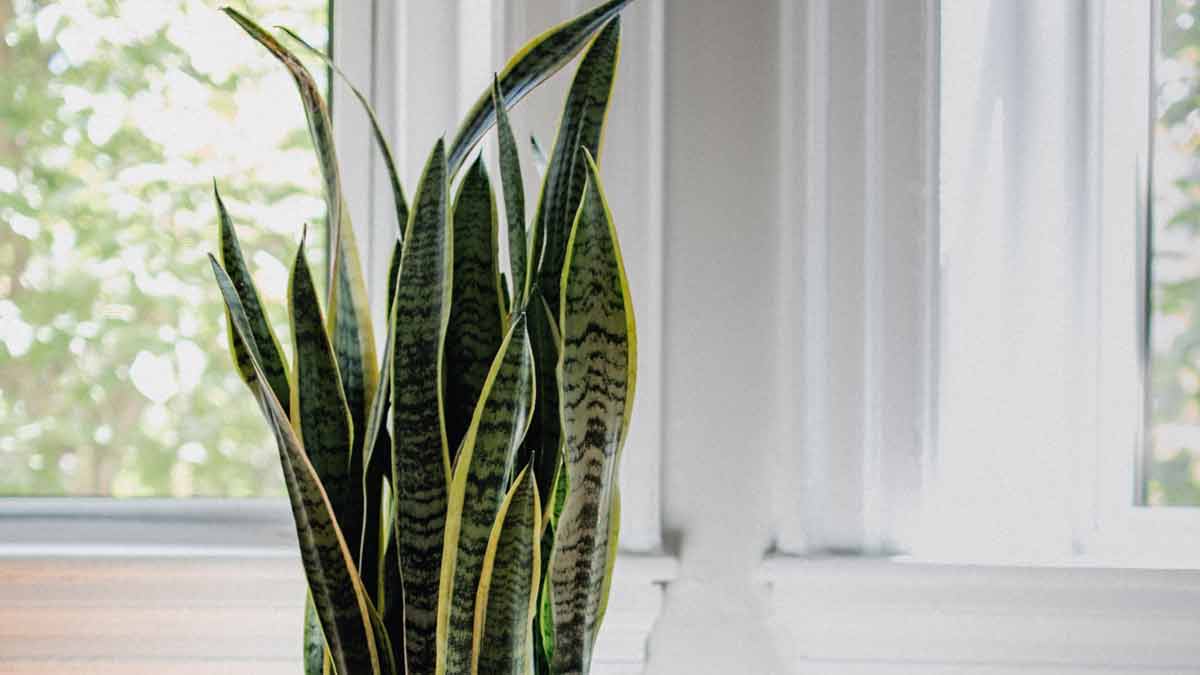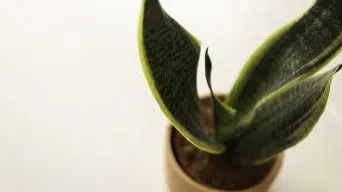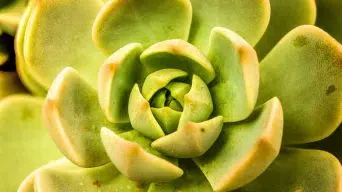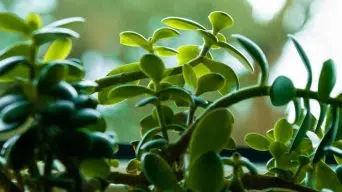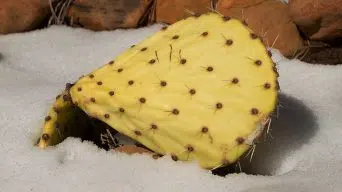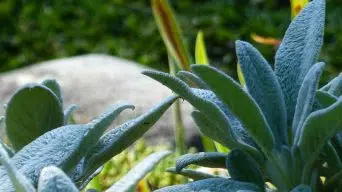Snake plants (Dracaena trifasciata) are one of the most popular houseplants because they are very easy to care for.
However, even the most low-maintenance plant can experience problems from time to time. One of the most common issues snake plant owners face is yellowing leaves.
If you notice your snake plant leaves turning yellow, there are a few possible reasons. In some cases, it may be due to simple negligence on your part, such as not watering the succulent often enough.
However, several other potential causes exist, such as pests, disease, or even too much sunlight.
No matter the cause, it’s essential to take action as soon as you notice the problem. The sooner you address the issue, the better your chance of saving your plant.
What Causes Snake Plant Leaves to Turn Yellow? (And How To Fix It)
There are several reasons why snake plant leaves might turn yellow. Here are some of the most common causes and solutions to each problem.
1. Too Much Water
If you’re overwatering your snake plant, the roots are likely sitting in water for too long. Overwatering can happen for several reasons, such as using too much water when you water the plant or not draining the pot properly after watering.
This can cause the roots to rot, eventually leading to yellow leaves.
How To Tell If You’re Overwatering Your Snake Plant
There are a few signs that you may be overwatering your snake plant.
The most common signs are:
- Yellow leaves
- Mushy leaves
- Leaves that are falling off
- A foul odor coming from the plant
- Mold or mildew on the leaves
If you notice any of these signs, you must take action immediately. The sooner you address the problem, the better your chance of saving your plant.
How To Fix an Overwatered Snake Plant
If you think you may have overwatered your snake plant, you can do a few things to save it.
You must stop watering the plant and let the soil dry out completely. Once the soil is dry, you can start watering again, but be sure to water less often.
It’s also good to repot your snake plant in fresh, dry soil. This will help ensure that the roots have plenty of room to breathe and won’t sit in water for too long.
2. Not Enough Water
While overwatering is a common problem, not watering your snake plant enough can also cause yellow leaves.
Underwatering can be caused by several factors, such as forgetting to water the plant or letting the soil dry out for too long between watering.
Snake plants need to be watered about once a week or when the soil is dry to the touch.
How To Tell If You’re Underwatering Your Snake Plant
There are a few signs that you may be underwatering your snake plant.
The most common signs are:
- Dry, brittle leaves
- Leaves that are turning brown
- Leaves that are falling off
- Drooping leaves
If you notice any of these signs, you must take action immediately.
How To Fix an Underwatered Snake Plant
If you think you may have an underwatered snake plant, you can do a few things to save it.
Water your plant immediately, and be sure to water it deeply. Water until the soil is saturated and the water is draining from the bottom of the pot.
After watering, empty any excess water from the saucer or tray underneath the pot.
You should also mist the leaves of your snake plant with distilled water to help it recover.
Water your plant about once a week from now on or as needed to prevent underwatering in the future.
3. Water Quality
Another possible reason snake plant leaves turn yellow is the water quality you’re using.
If the water is too hard or has a high mineral content, it can cause problems for your snake plant.
Tap water that is high in chlorine or fluoride can also cause problems.
This type of water can build up in the soil and cause several problems, such as nutrient deficiencies, root rot, and yellow leaves.
How To Tell If The Water Quality Is Poor
There are a few signs that the water quality may be poor.
The most common signs are:
- Yellow leaves
- Brown leaves
- Wilted leaves
- The leaves of your plant are falling off
If you notice any of these signs, you must take action immediately.
How To Fix Poor Water Quality
If you think the water quality may be poor, you can do a few things to save your plant.
First, start by using distilled or filtered water for your plant. This will help to remove any impurities from the water.
You can also let tap water sit for 24 hours before using it on your plant. This will allow the chlorine and fluoride to evaporate from the water.
You can also try using rainwater for your plant. This is the best type of water for plants, as it’s free of impurities and chemicals.
4. Nutrient Deficiencies
Nutrient deficiencies are another common cause of yellow leaves.
Snake plants need some essential nutrients, such as nitrogen, potassium, and phosphorus, to stay healthy.
These nutrients are typically found in most commercial soils. However, over time, these nutrients can become depleted.
This can happen for a number of reasons, such as watering with distilled water or using a potting mix that doesn’t have enough nutrients.
It’s also possible to overwater your plant, which can cause the nutrients in the potting soil to leach out.
How To Tell If Your Plant Has A Nutrient Deficiency
The easiest way to tell if your plant has a nutrient deficiency is to look at the leaves.
If the leaves are yellow with green veins, it’s likely a nitrogen deficiency. If the leaves are yellow with brown spots, it’s likely a potassium deficiency.
If the leaves are red or purple, it’s likely a phosphorus deficiency.
Other signs of nutrient deficiencies include:
- Curling leaves
- Leaves that are smaller than normal
- Stunted growth
- Slow growth
If you notice any of these signs, you must take action immediately.
How To Fix A Nutrient Deficiency
If you think your plant has a nutrient deficiency, you should first test the soil.
You can buy a soil test kit at most garden stores or online.
This will help you to determine which nutrients are lacking and how much needs to be added.
Once you know which nutrients are needed, you can add them to the soil using a fertilizer.
Be sure to follow the directions on the fertilizer carefully, as too much of a nutrient can be just as harmful as too little.
You can also try adding compost to the soil mix. This is an excellent source of nutrients for plants and can help to improve the overall health of your plant.
5. Lack of Light
Another common cause of snake plant leaves turning yellow is a lack of light.
Snake plants need bright indirect light to stay healthy. If they don’t get enough light, the leaves will begin to turn yellow.
Light is essential for photosynthesis, which is the process that plants use to create food and energy.
Without enough light, the plant will be unable to create food and energy, leading to several problems, such as stunted growth, yellow leaves, and even death.
How To Tell If Your Plant Is Getting Enough Light
There are a few signs that your plant is not getting enough light.
The most common signs are:
- The leaves of your plant are yellow
- The leaves of your plant are pale
- The leaves of your plant are small
- The growth of your plant is stunted
- The plant is leaning toward the light
- The plant is thin and spindly
If you notice any of these signs, you must take action immediately.
How To Fix A Lack Of Light
If you think your plant is not getting enough light, there are a few things you can do to fix the problem.
The first thing you should do is move your plant to a brighter location.
Snake plants need bright indirect light, so an east- or west-facing window is ideal.
They need at least 4 hours of light daily, but more is better.
If you can’t move your plant to a brighter location, you can try using grow lights. Grow lights are artificial lights that mimic sunlight.
They are an excellent way to provide your plant with the light it needs to stay healthy.
You can also try moving your plant outdoors for a few hours daily. This will give it the light it needs to stay healthy.
Just be sure to bring it back indoors before the sun gets too hot, as snake plants can’t tolerate direct sunlight.
6. Too Much Sunlight
Although snake plants need bright light to stay healthy, too much sunlight can be harmful.
Succulents exposed to direct sunlight for too long will begin to develop yellow leaves.
The leaves may also become crispy and dry.
If the problem is not fixed, the plant may eventually die.
How To Tell If Your Plant Is Getting Too Much Sunlight
There are a few signs that your plant is getting too much sunlight.
The most common signs are:
- The leaves of your plant are yellow
- The leaves of your plant are crispy and dry
- The leaves of your plant are falling off
- The plant is wilting
If you notice any of these signs, you must take action immediately.
How To Fix Too Much Sunlight
If you think your plant is getting too much sunlight, there are a few things you can do to fix the problem.
The first thing you should do is move your plant to a shadier location.
If the plant is outdoors, you can try moving it to a spot that gets partial sun. A place that gets morning sun and afternoon shade is ideal.
If the plant is indoors, you can try moving it to a spot that gets indirect sunlight. An east- or west-facing window is a good option.
You can also try using a sheer curtain to filter the sunlight.
7. Transplant Shock
Transplant shock is another common cause of yellow leaves. It’s akin to the struggle of a dying plant trying to adapt to its new surroundings.
Transplant shock occurs when a plant is moved from one location to another.
The plant’s roots are disturbed and cannot adjust to its new environment.
This can lead to several problems, such as yellow leaves, stunted growth, and even death.
How To Tell If Your Plant Is Suffering From Transplant Shock
There are a few signs that your plant is suffering from transplant shock.
The most common signs are:
- The leaves of your plant are yellow
- The leaves of your plant are wilting
- The growth of your plant is stunted
- The plant is not growing new leaves
If you notice any of these signs, you must take action immediately.
How To Fix Transplant Shock
If you think your plant is suffering from transplant shock, the best thing is to give it some time.
The plant will eventually adjust to its new environment, and the leaves will return to their normal color.
You can also help the plant by giving it extra care.
Make sure to water your plant regularly and fertilize it if necessary.
You should also make sure that the plant has enough light.
If you take these steps, your plant should recover from transplant shock within a few weeks.
8. Temperature Stress
Temperature stress is another common cause of snake plant leaves turning yellow.
Snake plants are native to tropical regions, so they prefer warm temperatures.
However, they can tolerate a wide range of temperatures.
The ideal temperature for a snake plant is between 60 and 85 degrees Fahrenheit.
If the temperature gets too hot or too cold, the plant will begin to experience stress.
This can lead to several problems, such as yellow leaves, stunted growth, and even death.
How To Tell If Your Plant Is Suffering From Temperature Stress
There are a few signs that your plant is suffering from temperature stress.
The most common signs are:
- The leaves of your plant are yellow
- The leaves of your plant are wilting
- The leaves of your plant are drooping
- The growth of your plant is stunted
- The plant is not growing new leaves
If you notice any of these signs, you must take action immediately.
How To Fix Temperature Stress
If you think your plant is suffering from temperature stress, the best thing to do is move it to a location with more ideal temperatures.
If the plant is outdoors, you can try moving it to a spot that gets partial sun. An area that gets morning sun and afternoon shade is ideal.
If the plant is indoors, you can try moving it to a spot that gets indirect sunlight. An east- or west-facing window is a good option.
Be careful not to place the plant in a spot that gets direct sunlight, which can cause the leaves to scorch.
You also need to keep the snake plant away from drafts.
If you take these steps, your plant should recover from temperature stress within a few weeks.
9. Pest Infestation
Pests are another common cause of yellow leaves.
Several pests can infest snake plants, including aphids, mealybugs, spider mites, and scale insects.
These pests feed on the plant’s leaves, causing them to turn yellow.
They can also cause the plant to experience stunted growth and even death.
How To Tell If Your Plant Is Suffering From A Pest Infestation
There are a few signs that your plant is suffering from a pest infestation.
The most common signs are:
- The leaves of your plant are yellow
- The leaves of your plant are covered in white powder
- The leaves of your plant are covered in webbing
- The leaves of your plant have holes in them
- You see insects crawling on the plant
If you notice any of these signs, you must take action immediately.
How To Fix A Pest Infestation
If you think your plant is suffering from a pest infestation, you first need to isolate the plant from other plants.
This will prevent the pests from spreading to other plants.
Next, you can remove the pests from the plant by hand. Use a cotton swab dipped in rubbing alcohol to remove aphids, mealybugs, and spider mites.
For scale insects, you can use a toothbrush dipped in rubbing alcohol.
Be sure to dispose of the pests immediately so they don’t spread to other plants.
You can also treat the plant with a natural insecticide, such as neem oil.
Neem oil is a safe and effective way to get rid of pests.
Simply mix a few drops of neem oil with water and spray it on the plant.
Be sure to follow the instructions on the bottle.
If you take these steps, your plant should recover from a pest infestation within a few weeks.
10. Fungal Disease
Fungal diseases are another common cause of snake plant leaves turning yellow.
Several fungal diseases can affect snake plants, including powdery mildew, root rot, and leaf spot.
Powdery mildew is a fungus that forms a white powder on the plant’s leaves.
Root rot is a type of fungus that attacks the roots of the plant, causing them to rot.
Leaf spot is a fungus that causes brown or black spots on the plant’s leaves.
These diseases can cause the leaves of the plant to turn yellow. They can also cause the plant to experience stunted growth and even death.
How To Tell If Your Plant Is Suffering From A Fungal Disease
There are a few signs that your plant suffers from a fungal disease.
The most common signs are:
- The leaves of your plant are yellow
- The leaves of your plant are covered in white powder
- The leaves of your plant have brown or black spots
- The roots of your plant are rotting
If you notice any of these signs, you must take action immediately.
How To Fix A Fungal Disease
If you think your plant is suffering from a fungal disease, you first need to isolate the plant from other plants.
This will prevent the disease from spreading to other plants.
Next, you need to cut off any affected leaves. Be sure to dispose of the leaves so they don’t spread the disease to other plants.
You can also treat the plant with a natural fungicide, such as neem oil.
Neem oil is a safe and effective way to eliminate fungal diseases.
Simply mix a few drops of neem oil with water and spray it on the plant.
Be sure to follow the instructions on the bottle.
11. Natural Leaf Yellowing
In some cases, the leaves of your snake plant may turn yellow due to a natural process.
This is especially common in older leaves.
As the plant ages, it will naturally produce fewer chlorophyll molecules.
Chlorophyll is what gives plants their green color.
As the number of chlorophyll molecules decreases, the plant leaves will begin to turn yellow.
This is a natural process and is nothing to worry about.
How To Tell If Your Plant Is Experiencing Natural Leaf Yellowing
There are a few signs that your plant is experiencing natural leaf yellowing.
The most common signs are:
- The leaves of your plant are turning yellow
- The leaves of your plant are starting to fall off
- The plant is not growing as much as it used to
- The affected leaves are on the bottom of the plant
If you notice these signs, your plant is likely experiencing natural leaf yellowing.
How To Fix Natural Leaf Yellowing
There is no need to fix natural leaf yellowing.
This is a natural process and cannot be prevented.
However, you can make your plant look fuller by trimming off the yellow leaves.
Be sure to dispose of the leaves immediately so they don’t spread the disease to other plants.
You can also fertilize your plant to help it grow more leaves.
Fertilizing your plant will help it produce more chlorophyll molecules, which will help the succulent plant appear greener.
How To Prevent Yellow Snake Plant Leaves
If you notice your snake plant turning yellow, you can do a few things to prevent the issue from worsening.
Here are some tips:
- Make sure the plant is getting enough light. If the leaves are yellowing due to a lack of light, move the plant to a brighter spot.
- Check the soil moisture and make sure the plant is getting enough water. If the soil is too dry, water the plant more frequently.
- Use a well-draining potting mix. This will help prevent the plant from becoming overwatered.
- Make sure the pot has proper drainage holes. This will allow excess water to drain, preventing the plant from sitting in water.
- Avoid using too much fertilizer, as this can cause snake plant leaf yellowing. Only fertilize the plant when necessary, and use a balanced fertilizer.
- Inspect the plant for pests and diseases. If you notice any insects or fungal growth, treat the plant accordingly.
- Make sure the temperature and humidity levels are appropriate for the plant. Snake plants prefer warm, dry conditions.
- Trim off any yellow leaves as they appear. This will help keep the plant looking healthy and prevent the spread of the problem.
Following these tips can help prevent your snake plant leaves from turning yellow.
Final Thoughts
There are several different reasons why the leaves of your snake plant may turn yellow.
However, there is no need to worry. In most cases, the yellow leaves can be fixed with a few simple changes to your plant’s care routine.
If you notice your snake plant turning yellow, look closely at your indoor plant and its environment.
Identify the problem and then take the necessary steps to fix it.
With patience and care, you should be able to get your snake plant back to good health in no time.

